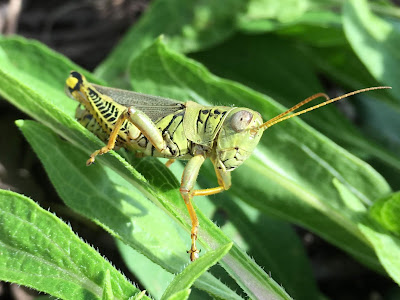Insects are extremely diverse. Part of that diversity is apparent in the ways that they consume their preferred food. Today, inspired by an anonymous listener question, the Arthro-Pod gang goes over the different types of insect mouths and how they help insects to begin the process of digestion. Then join them as they traverse the three "guts" of insects and end up on the other side of the anus with insect frass. It's an episode with lots of colorful descriptions and turns of phrase, that's for sure.
 |
| Insect mouths come in different shapes and perform different jobs but they contain the same parts across most of the board; a labrum, the mandibles, maxillae, the hypopharnyx, and the labium |
 |
| Chewing mouths are the most common of all mouths, found on predators and herbivores such as this grasshopper |
 |
| Siphoning mouthparts are unique, they have been modified to curl up and unfurl and help slurp up nectar |
 |
| Piercing-sucking mouthparts can be used to suck juices from plants, or as this wheel bug would do, to suck the juices from prey |
 |
| Sponging mouthparts are found on many flies, they use these to acquire liquid food |
https://genent.cals.ncsu.edu/bug-bytes/digestive-system/
Some of Jody's favorite bug poo
Drywood termite frass is quite distinct Tomato hornworm frass is often compared to the shape of a hand grenade Here a tortoise shell beetle uses frass as a defensive shield
Questions? Comments?




